Consumers tighten spending and high inventories in importing countries have caused many industries to lower export targets this year.
The latest report from the Ministry of Agriculture and Rural Development shows that by the end of July, the total export turnover of agricultural, forestry and fishery products reached 29.13 billion USD, down 9.1% over the same period last year. Of which, aquatic and forestry product exports decreased the most, reaching 4.95 billion USD and 7.79 billion USD, respectively, down more than 25% over the same period in 2022.
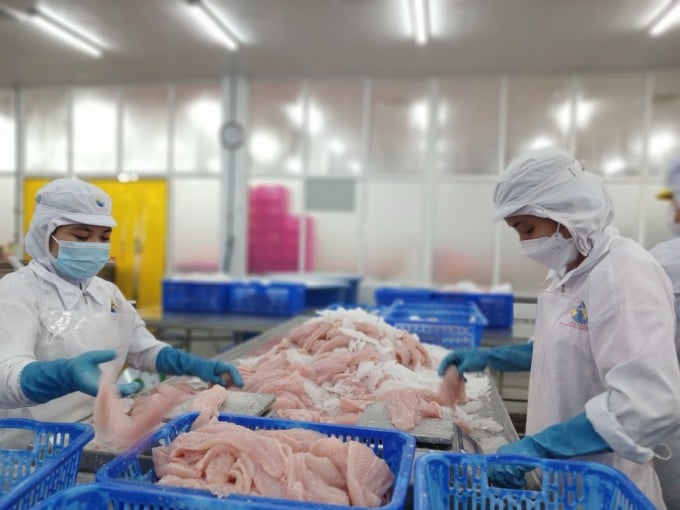
Workers are processing basa fish at Navico An Giang factory. Photo: Thi Ha
In the face of difficulties, Vinacas has just proposed to adjust this year’s cashew export turnover to 3.05 billion USD. Previously, the association also asked to lower the export turnover from 3.8 billion USD to 3.1 billion USD, according to the plan of the Ministry of Agriculture and Rural Development.
Similarly, the forestry group, although expecting to earn 18 billion USD in export revenue, has lowered its target to 14 billion USD due to the sharp decrease in prices of wood and wood products.
Regarding seafood, the Vietnam Association of Seafood Exporters and Producers (VASEP) said it has lowered this year's export target much lower than in 2022. Two scenarios have been proposed. If conditions are favorable in the last 5 months of the year, the total export turnover for the year will reach over 9 billion USD, down 15-16% compared to 2022. In the less optimistic scenario, exports may only bring in 8.5-8.7 billion USD.
The reason for the lower export targets is due to the instability of global consumption. Mr. Nguyen Chanh Phuong, Vice President and General Secretary of HAWA, said that in the fall, the demand for wood and furniture products in the US and European markets was quite low. Meanwhile, the impact of the rising euro made it difficult for import-export businesses to obtain raw materials. The consumption trends of European people have many adjustments, so the demand is also lower than the same period.
Sharing with VnExpress, export enterprises said that the world's demand for cashew nuts is slowing down. The supply of raw materials from African countries is gradually moving towards self-production and processing of cashew nuts. Therefore, the source of raw materials imported from Africa to Vietnam is often low-grade raw cashews. Enterprises importing goods and storing them for a long time will affect the quality.
In the seafood industry, businesses see export orders to the US and China markets decreasing by 20-30% compared to the same period in 2022. Currently, high input costs and low product prices are causing farmers to abandon their ponds. This has reduced supply and caused export activities to plummet. In addition, businesses are also reviewing production costs, so they are not expanding investment in export markets. Many other seafood businesses choose to find a foothold in the domestic market to reduce costs.
Mr. Truong Dinh Hoe - General Secretary of VASEP advised seafood businesses to maintain close contact with importers and maintain markets with high demand. From now until the end of the year, attention should be paid to China, because this is a market that recovers quickly.
VASEP also said that the US is Vietnam's largest seafood export market, and is expected to recover in the last months of the year when holiday demand increases. For the Japanese, Korean, and Chinese markets, it is forecasted to increase slightly again in the early fourth quarter.
Speaking at a regular press conference in July, Deputy Minister of Agriculture and Rural Development Phung Duc Tien advised businesses to proactively balance raw material sources and finances to retain traditional customers; adjust export market structure and product structure. In addition, businesses need to seize the opportunity of tariff incentives from free trade agreements to maintain their competitive position.
This year, the Ministry expects the agricultural export target of 54-55 billion USD can be achieved if the two key sectors, forestry and fishery, regain growth momentum in the second half of the year.
Although there are only 5 months left, the Ministry believes that the market is showing signs of warming up - Asia recorded a slight growth of 2.3%. China is paying more attention to Vietnamese agricultural, forestry and fishery products, especially agricultural products, which are the items that this country has increased its purchases of.
SSI Securities Corporation said that seafood export companies will start to see improved profits in the second half of the year, thanks to lower raw material and transportation costs. The company expects leading exporters to the US market to see a slight decrease or flat profit in the third quarter compared to the same period last year and positive profit growth from the fourth quarter.
Thi Ha
Source link


![[Photo] Overcoming all difficulties, speeding up construction progress of Hoa Binh Hydropower Plant Expansion Project](https://vstatic.vietnam.vn/vietnam/resource/IMAGE/2025/4/12/bff04b551e98484c84d74c8faa3526e0)


![[Photo] Closing of the 11th Conference of the 13th Central Committee of the Communist Party of Vietnam](https://vstatic.vietnam.vn/vietnam/resource/IMAGE/2025/4/12/114b57fe6e9b4814a5ddfacf6dfe5b7f)








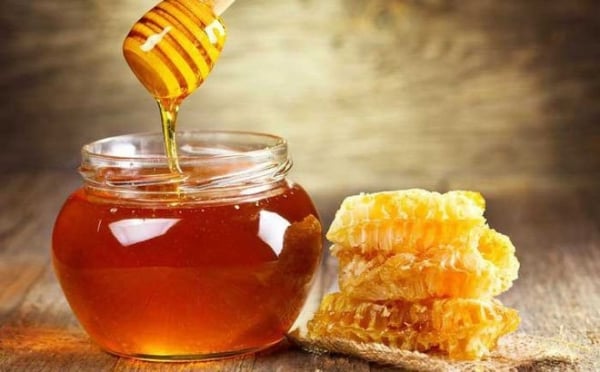

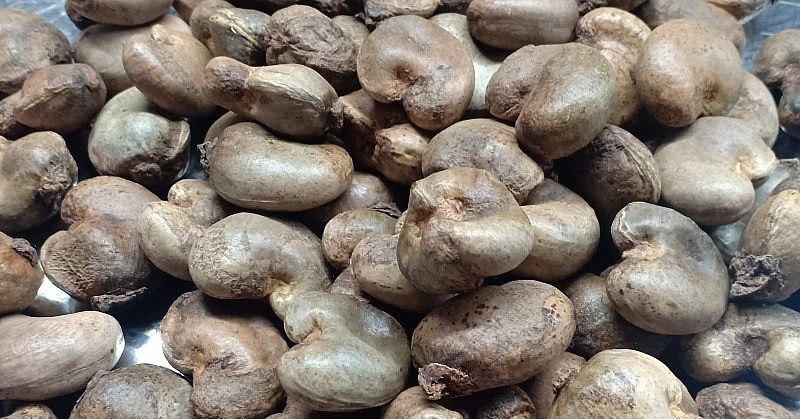

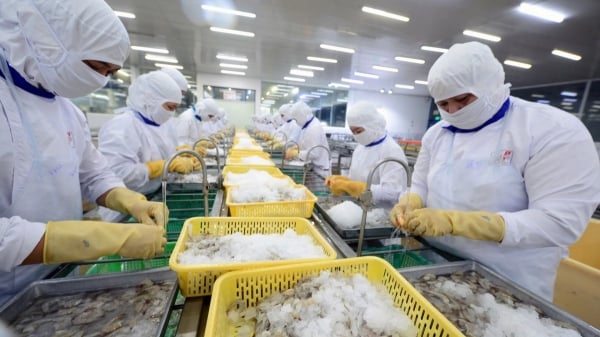




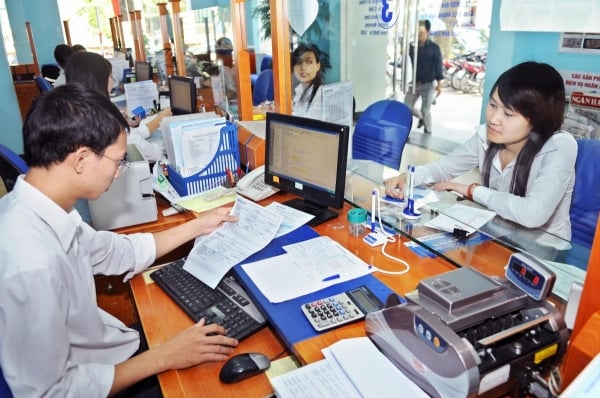



























































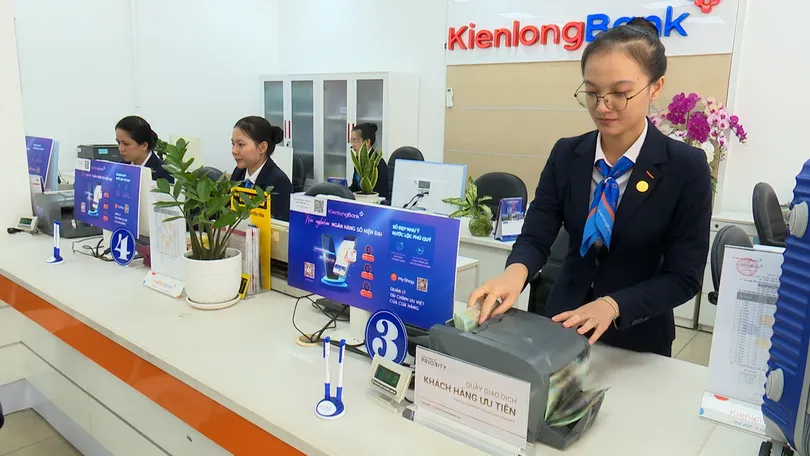











Comment (0)